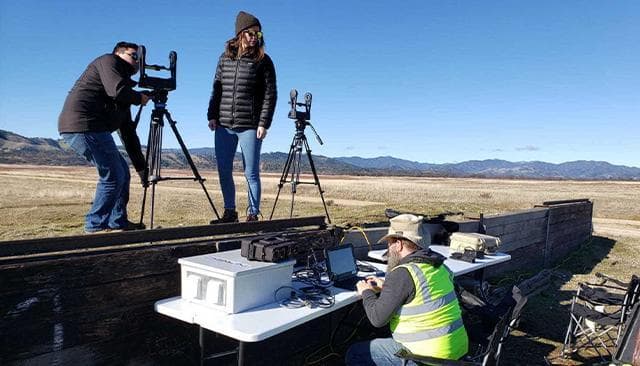2020 Year in Review
National Initiative Forges the Path to an Engineering Discipline for AI
In the global rush to harness the transformative potential of artificial intelligence (AI), most research and development has been devoted to creating capabilities. Little progress has been made in the engineering of those capabilities to ensure that they are safe and reliable. Current AI solutions, which are often speedily deployed and difficult to replicate, verify, and validate, could lead to unintended negative consequences.
As the Department of Defense (DoD) invests in this rapidly evolving field, it is prioritizing safe, ethical, and secure solutions that consider AI’s characteristics and complexities. In 2020, DoD leadership tasked the Defense Innovation Board (DIB) with proposing principles to support this intent. The DIB set forth recommendations for AI practices that integrate ethics, help shape international norms, and mitigate potential harms as part of the DoD vision.
To further this vision, the Software Engineering Institute (SEI) will lead a National AI Engineering Initiative with funding and guidance from the Office of the Director of National Intelligence (ODNI). “We are leading a movement to advance this discipline in support of defense and national security,” said Matt Gaston, the director of the SEI’s Emerging Technology Center. “Our effort with ODNI will bring together organizations and experts working in AI engineering to achieve the goals of scalable, robust and secure, and human-centered AI.” AI must be scalable so it can be adapted to a variety of problems and sizes of problems; robust and secure so that it behaves as expected and is difficult for adversaries to manipulate; and human-centered to account for ethics and the needs of human users.
This work grew out of an earlier effort to define AI engineering. In 2019, in response to a growing call for an engineering discipline for AI, the SEI convened the first workshop on AI Engineering for Defense and National Security. This event laid a foundation for identifying challenges and opportunities for future initiatives. Findings from the workshop, along with needs identified by the DoD in its AI Strategy and in the DIB principles, informed the goals of the SEI–ODNI national initiative.
Discussing AI at the SEI 2020 Research Review, Joint AI Center director Lt. Gen. Michael Groen stated, “This is a transformation that’s coming. We’ve got the great academic base, the great industrial base for creative thinking and data engineering and AI application. This is our superpower as a nation. Let’s leverage it and get out in front of the wave.”
This is a transformation that’s coming. We’ve got the great academic base, the great industrial base for creative thinking and data engineering and AI application. This is our superpower as a nation. Let’s leverage it and get out in front of the wave.
Lt. Gen. Michael GroenDirector, DoD Joint AI Center

The SEI plans to stay out front. It will engage organizations and experts working in AI engineering and will include research and development activities such as creating tools, practices, processes, and methods. It will capture lessons from the experiences of industry, academic, and defense researchers, developers, and implementers to promote the engineering of AI capabilities that can meet the needs and challenges of defense and national security.
Thirty years ago, Mary Shaw, a founder of the SEI and its former chief scientist, wrote in her SEI technical report Prospects for an Engineering Discipline of Software that the problems of current practice often stimulate the development of a corresponding science. “There are good grounds to expect that there will eventually be an engineering discipline of software.” AI’s prospects appear similarly strong on its path to a more disciplined maturity.
To learn more, visit sei.cmu.edu/our-work/artificial-intelligence-engineering.
RESEARCHERS
Matt Gaston, Tanisha Smith, Frank Redner, Hollen Barmer, Alex Van Deusen, John Wohlbier, Jay Palat, Carol Smith, Rachel Dzombak, Tina Sciullo-Schade



